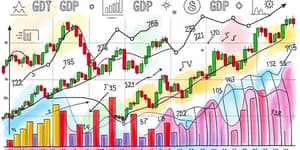
Market liquidity sits at the heart of every thriving financial system. When assets move freely and prices stay stable, investors feel confident to act. This article delves into the core mechanics of liquidity, its multifaceted importance, methods to measure it, inherent risks, and actionable strategies for participants.
At its core, market liquidity is the ease with which assets can be bought or sold without significantly affecting their prices. A liquid market boasts abundant buyers and sellers, facilitating swift trades at predictable price levels. Conversely, an illiquid market forces sellers to accept substantial discounts to execute transactions rapidly.
A liquid asset can be rapidly converted to cash, while illiquid assets often require extended wait times or steep price concessions. Recognizing this distinction helps investors balance their portfolios between stability and potential returns.
Liquidity manifests in several forms beyond the market itself. Understanding these types clarifies where strengths and vulnerabilities lie.
Each type interacts: poor funding liquidity can erode market liquidity, creating ripple effects across financial systems.
Market liquidity is not a single metric but a blend of characteristics. Recognizing these dimensions empowers better assessment:
By dissecting liquidity into these facets, traders and policymakers can pinpoint weaknesses before they escalate into crises.
High liquidity drives efficient markets, attracting participants and reducing risk. Key advantages include:
Liquid markets become self-reinforcing: as participants flock in, activity begets more activity, solidifying price reliability and broadening access.
Quantitative gauges help compare liquidity across assets and time. Common measures include:
Regular monitoring of these metrics offers early warning signals of deteriorating conditions.
Liquidity is not a constant. In stress scenarios, it can evaporate, triggering sharp downturns and market freezes. Investors should remain vigilant against:
Lower returns: Ultra-liquid assets often yield less income than longer-term investments. Holding too much cash, for example, invites inflation erosion over time.
Another significant hazard is the emergence of liquidity spirals. In a negative feedback loop, falling asset prices deter buyers, widening spreads and prompting further price declines. The 2008 financial crisis illustrated how quickly markets can seize up under pressure.
Successful market participants integrate liquidity analysis into every decision. Consider these strategies:
At the institutional level, robust risk management frameworks and transparent market infrastructure enhance overall liquidity resilience.
Market liquidity is more than a technical concept—it’s a cornerstone of financial stability and investor confidence. By grasping its dimensions, benefits, measurement methods, and potential pitfalls, market participants can navigate complex environments with greater assurance.
Embracing liquidity as a central pillar of strategy not only facilitates smoother trading but also fortifies portfolios against unforeseen shocks. In an ever-evolving financial landscape, understanding market liquidity remains a key to enduring success.
References













